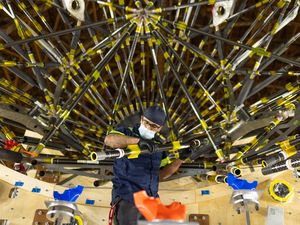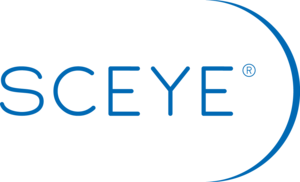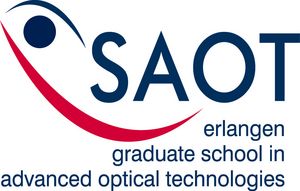International Conference On Electric Airships - Decarbonizing Aviation
10033Flexible thin-film solar cells, highly efficient power electronics, and lightweight batteries enable the construction of a new generation of airships. This includes drones, high altitude airships, and airships for cargo and passenger transport. In particular, airships can be used in the future for:
- transport to remote areas
- sustainable cargo transport
- transport of heavy loads
- sustainable passenger transport
- monitoring and surveillance of e.g. pipelines, high power transmission lines
- provision of telecom and internet connections
- tourism transport, recreation, and sightseeing
- humanitarian aid, disaster relief


The conference covers technical aspects as well as applications and environmental aspects.
Conference Topics:
- Construction and design of airships
- Construction of low and high altitude drones
- Sustainable aviation by airships
- Power electronics and batteries for airships
- Solar energy for airships
- Application of airships
- Usage of hydrogen as energy source and lifting gas
- Certification, regulation and integration in existing aerospace
- Infrastructure, ground handling of airships
Conference Agenda
Please find the detailed program of the conference here.
Speakers and Topics
Challenges and prospective solutions for propulsion of a zero-emission cargo airship
Dr. Sylvain Allano, Flying Whales
There are already numerous known techniques for the on-board production of electrical energy in airships. To achieve a zero-emission objective in cargo airships with a large payload capacity, solutions based on hydrogen stored in gaseous or liquid form appear to be the best options in the medium term. However, other disruptive solutions could be explored.
Design and sizing of a hybrid electric powertrain for an airship
Andreas Bender, University of Stuttgart, Institute of Aircraft Design (IFB)
Small unmanned hydrogen airships for long range monitoring
Martin Bocken, Co-Founder & CEO of Hylight
Ultralight weight PV modules – where are the limitations
Prof. Dr. Christoph Brabec, Helmholtz-Institut Erlangen-Nürnberg + Chair Institute Materials for Electronics and Energy Technology, Friedrich-Alexander-Universität Erlangen-Nürnberg (FAU)
From piston engines to hybrid electrical drivetrains: a feasbility study to evaluate re-engining options for the Zeppelin NT airship
Eckhard Breuer, ZLT Zeppelin Luftschifftechnik
The Zeppelin NT has been in commercial service since 2001. Currently, five airships of this type are in operation in Germany and the US. The Zeppelin NT’s propulsion system comprises of three Lycoming IO 360 piston engines. Zeppelin Luftschifftechnik and the University of Stuttgart have jointly developed a feasibility study under the German “LuFo” research programme to identify the technical and operational feasibility of replacing the current piston engines by a hybrid electrical drivetrain, with the goal of reducing emissions as well as operating cost.
Enabling technology for the next generation of electric airships
Dr. Andreas Burkart, Windreiter UG
LTA has been in the air for more than hundred years, but never really took off. Today modern technology in batteries, solar cells and lightweight constructions are changing the game. Windreiter as a development company seeks to get technologies ready for use in airships. We present small and large drone airships and our unique envelope fabrication process.
Discussing use cases for airships in fresh produce agri-food chains
Florian Cramer, Kühne Logistics University
To better understand potential applications in agri-food chains, we discuss the general structure of agri-food systems and take a closer look at where aerial vehicles are already being used, where airships can augment their use, and where or how airships can facilitate new opportunities for a sustainable distribution of perishable food items.
Design and Performance of Transport Airships
Johannes Eißing, Aerarium Luftschifftechnik e.V.
Airship design and testing : experience as a key
Bastien Lefrancois, Expert on LTA technology
- Testing is the ultimate milestone of design : it occurs at the end of a long process that starts with an idea and comes up with a prototype. The purpose is to demonstrate that the prototype meets the broad set of requirements that defines the expected performance and capabilities, and responds to the applicable regulatory standards. An efficient testing is an exercise of planning and risk management : a cheap test is an early test, but it has to be as closely representative as possible of the final system. But speaking of airships, testing also encloses a wider scope and subtleties that can be intimately linked to the viability of the program.
From Science Fiction Dreams to Reality - Partial Vacuum Lift
Diana Little, Anumá Aerospace, LLC
- Anumá Aerospace is solving the helium problem for LTA.
Lift and Power for Unmanned All Season Fleet of Kelluu Airships
Jouni Lintu, Kelluu
- Hydrogen as lifting gas and energy source provides numerous advantages in airship operations and design. I will introduce Kelluu's approach and some practical lessons learned.
Power Electronics for Aircraft and Airship Applications
Prof. Dr. Martin März, Fraunhofer-Institut IISB + Chair Power Electronics, Friedrich-Alexander-Universität Erlangen-Nürnberg (FAU)
- Power electronics is a key technology on the way to sustainable electric flying.
- New power semiconductor components have enabled drastic improvements in power density and efficiency in recent years. The presentation provides an overview of developments over the last few years, the current state of the art and future challenges and perspectives.
Research and Innovation Agenda for the LTA Sector, based on a European and International Survey
Dr. Frank Neumann, Institute for Infrastructure, Environment and Innovation (IMIEU)
Optimizing a high altitude electric airship to support a wireless infrastructure communications payload
Thomas Olson, Avealto Ltd. (UK)
- Avealto has completed the development of a Wireless Infrastructure Platform (WIP) for commercial operations. Stationed at high altitude, each vehicle is able to deliver high quality telecommunications capacity at a significantly lower cost than that of satellites. The development takes advantage of innovations in structural materials, electronics, solar cells and battery technologies.
Hybrid electric multi-lobed airships
Prof. Rajkumar S. Pant, Aerospace Engineering Department, Indian Institute of Technology Bombay
- Multi-lobed hybrid airships are a viable alternative to conventional aircraft when coupled with renewable energy sources. The electric propulsion system integrates solar arrays with fuel cells, which is then combined with conventional engines in a parallel powertrain architecture to ensure minimum energy transfer and compact size.
Solar Power Airships
Prof. Dr. Christoph Pflaum, Professorship for Computer Science, Friedrich-Alexander-Universität Erlangen-Nürnberg (FAU)
Based on commercial passenger airships like LZ129, a hypothetical electric rigid framed airship including a solar cell covered surface and a lithium-ion battery is designed. Simulations show that CO2 emissions are below 5% of the emissions of a conventional aircraft at an estimated energy consumption in USD per km of less than 2.5%.
Cargo Airships: Economics and Potential Applications
Prof. PhD Barry E. Prentice, ISO Polar Airship Assoc.
- Transport economics provides a useful lens for the examination of cargo airship markets. The markets considered are short-haul and long-haul general freight, project freight and aerial-craning, resource extraction and lastly, emergency and military logistical missions. Where possible economic principles are applied for each market to consider issues of size, range and utilization.
Northern Canadian Housing Demand - CMHC Project
Ross Prentice, BASI
- Cargo airships can reduce the high costs of building houses in the North by providing freight service throughout the year. 128 identified remote communities with a population of 123,435 people could be served using airships in Canada. The housing needs have been approximated at more than 15,000 dwellings needed, this number continues to grow every year.
Processing Cybernetic IoT Systems in the State of Suspension
Dr.-Ing. Csaba Singer, Hybrid-Airplane Technologies GmbH
- The development and implementation of a cybernetic IoT system based on a fleet of LTA-UAVs will be presented. The system integrates a multimodal sensor set and has been successfully tested in proof-of-concept scenarios. In conclusion, the developed hovering cybernetic IoT system shows a promising solution for a wide range of applications.
Atlas Electric Airships
Gennadiy Verba, Atlas LTA Advanced Technology, Ltd.
Using Stratospheric LTA for real-time wide-area detection
Kristian Ullum Vind, Sceye
- Sceye builds high-performance platforms for stratospheric infrastructure, that successfully provided an internet connection from stratosphere to the ground in 2021, and demonstrated the airship’s ability to stay over a designated area for operation for months by using renewable energy in 2022. Furthermore it demonstrated high-resolution environmental mapping in 2023.
Update on the Airlander 10 Programme
Nathanael West, Hybrid Air Vehicles Ltd
- Flight Sciences Engineer at Hybrid Air Vehicles, brings you an update on Airlander 10 and our work baselining the production design. Nat explores Airlander’s pathway to electrification and the technology required to achieve zero emissions flight by 2030.
Program Overview
| Sept. 27th | Sept. 28th | Sept. 29th | Sept. 30th | |
| 7:45 a.m. - 8:30 a.m. | - Registration Location: Energie Campus Nürnberg | - Registration Location: Energie Campus Nürnberg | ||
| 8:30 a.m. - 6:00 p.m. | - Conference, Lunch - Poster Session Location: Energie Campus Nürnberg | - Conference, Discussions with lunch, coffee breaks, snacks Location: Energie Campus Nürnberg | - Sightseeing of Nuremberg | |
| 7:00 p.m. - 10:00 p.m. | - Registration and Casual Welcome Meeting Location: Hotel Bruderherz | - Reception Location: Old Town Hall of Nuremberg | - Conference Dinner Location: Restaurant Heilig-Geist-Spital | |
Contact Information
Prof. Dr. Christoph Pflaum
Department of Computer Science
Professorship for Computer Science (Numerical Simulation using Highest-Performance Computers)
Phone number: +49 9131 85-28692
E-Mail: christoph.pflaum@fau.de
Sponsors

Special Sponsor



